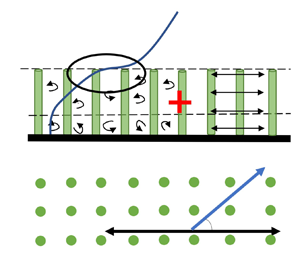Article contents
Drag-related wave–current interaction inside a dense submerged aquatic canopy
Published online by Cambridge University Press: 03 May 2022
Abstract

The seabed in coastal regions is often covered by a dense submerged canopy formed by benthic organisms. The in-canopy flow is of great interest to coastal researchers. In this study, a semi-analytical model is proposed for the in-canopy current profile under the influence of coexisting waves. The current is driven by a mean shear stress at the canopy top and a mean streamwise pressure gradient. Wave–current interaction arises from the mean canopy drag, which is described by the conventional quadratic law. An algebraic eddy viscosity model, which accounts for the turbulence generated by a canopy-scale vortex and stem-scale wake, is proposed. The model is calibrated against unidirectional flume experiments, and is subsequently validated against a wave–current flume experiment. It is found that the mean canopy drag experienced by the current can be significantly amplified by a co-existing wave-driven oscillatory flow. Under the same current driving force, the current in wave–current flow is reduced from that in a pure-current flow. The reduction increases with canopy density and wave strength. For a wave and current at an angle, veering of the current velocity vector is suggested by the model, which makes the mean canopy drag align with the driving force of the current.
- Type
- JFM Papers
- Information
- Copyright
- © The Author(s), 2022. Published by Cambridge University Press
References
REFERENCES
- 3
- Cited by



